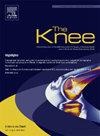下一代测序发现,在使用生物膜破坏灌洗剂的感染性 TKA 患者灌洗后标本中,微生物的多样性有所增加。
IF 1.6
4区 医学
Q3 ORTHOPEDICS
引用次数: 0
摘要
背景:假体周围感染(PJI)是关节置换术的一种破坏性并发症。在慢性假体周围感染中,生物膜包裹着假体表面,其中包含微生物群和微生物外聚合物基质(EMPM)。微生物鉴定是有效治疗的关键。在本研究中,我们使用了一种多模式、可破坏 EMPM 的新辅助灌洗剂,并通过培养和下一代测序 (NGS) 两种技术对灌洗前和灌洗后检测到的微生物群进行了比较。我们认为在使用 EMPM 干扰灌流剂后会发现更多微生物:我们对 38 名已知患有全膝关节置换术 PJI 的患者进行了多中心前瞻性研究。在最初的关节切开术中,获取滑液并进行定量培养和微生物 NGS 分析。然后用 Bactisure Lavage 冲洗关节,再用生理盐水冲洗。同样采集并分析灌洗后的样本:结果:在灌胃前培养样本中,55.3% 的样本呈阳性,鉴定出 11 种独特的微生物。在灌胃后的培养样本中,13.2%的样本呈阳性,确定了 5 种独特的生物。在用于 NGS 的前浸液样本中,79% 的样本 DNA 信号呈阳性,鉴定出 126 种独特的生物。在用于 NGS 的浸泡后样本中,74% 的样本 DNA 信号呈阳性,鉴定出 177 种独特的生物。此外,这些生物中有 135/177 在灌胃前没有被鉴定出来:结论:在这项灌胃前对灌胃后的研究中,培养显示灌胃后可识别生物的数量有所减少。相比之下,NGS 表明灌胃后可识别生物的数量有所增加。此外,NGS 还发现了 135 种灌胃前未检测到的生物。这表明在 EMPM 中可能存在更多的微生物多样性,而这些微生物是无法培养的。本文章由计算机程序翻译,如有差异,请以英文原文为准。
Next generation sequencing identifies an increased diversity of microbes in post lavage specimens in infected TKA using a biofilm disrupting irrigant
Background
Periprosthetic joint infection (PJI) is a devastating complication of joint arthroplasty. In chronic PJI, a biofilm envelops the surface of implants, which contains microbiota within an extra-microbial polymeric matrix (EMPM). Microbial identification is paramount for effective treatment. In this study, we use a multi-modal, EMPM disrupting, neoadjuvant irrigant and compare the microbiota detected pre-lavage to post-lavage by two techniques: culture and Next Generation Sequencing (NGS). We suspect more organisms to be identified after applying an EMPM disrupting irrigant.
Methods
A multicenter, prospective study was conducted on 38 patients with known Total Knee Arthroplasty PJI. At initial arthrotomy, synovial fluid was obtained and analyzed for quantitative cultures and microbial NGS. Joint was then irrigated with Bactisure Lavage followed by Normal Saline. Post-lavage samples were similarly obtained and analyzed.
Results
In pre-lavage samples for cultures, 55.3% of samples were positive, identifying 11 unique organisms. In post-lavage samples for cultures, 13.2% of samples were positive, identifying 5 unique organisms. In pre-lavage samples for NGS, 79% were DNA signal positive, identifying 126 unique organisms. In post-lavage samples for NGS, 74% of samples were DNA signal positive, identifying 177 unique organisms. Moreover, 135/177 of these organisms were not identified pre-lavage.
Conclusion
In this pre-to-post irrigant study, culture showed a decrease in the number of identifiable organisms post-lavage. In contrast NGS revealed an increase in the number of identifiable organisms post-lavage. Furthermore, NGS identified 135 additional organisms, not detected pre-lavage. This suggests an increased diversity of microbes may exist within EMPM, which are not cultivable.
求助全文
通过发布文献求助,成功后即可免费获取论文全文。
去求助
来源期刊

Knee
医学-外科
CiteScore
3.80
自引率
5.30%
发文量
171
审稿时长
6 months
期刊介绍:
The Knee is an international journal publishing studies on the clinical treatment and fundamental biomechanical characteristics of this joint. The aim of the journal is to provide a vehicle relevant to surgeons, biomedical engineers, imaging specialists, materials scientists, rehabilitation personnel and all those with an interest in the knee.
The topics covered include, but are not limited to:
• Anatomy, physiology, morphology and biochemistry;
• Biomechanical studies;
• Advances in the development of prosthetic, orthotic and augmentation devices;
• Imaging and diagnostic techniques;
• Pathology;
• Trauma;
• Surgery;
• Rehabilitation.
 求助内容:
求助内容: 应助结果提醒方式:
应助结果提醒方式:


